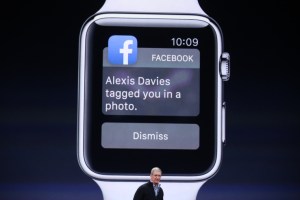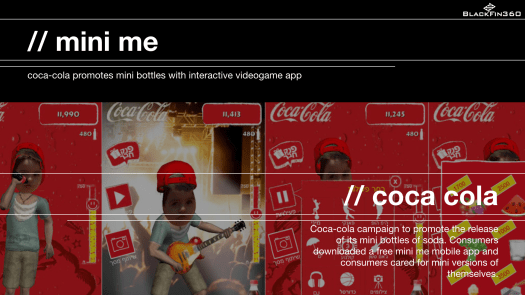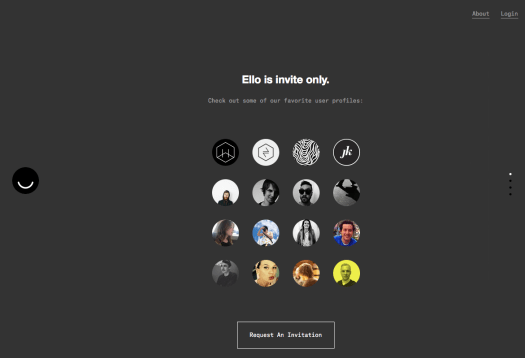Today my recap of 10 Learnings from Facebook F8 is the lead cover story for iMedia. Here is a link to the full article and below is a repost of the content.

I recently attended the 2015 Facebook F8 conference. Below is a recap of my top ten takeaways from the annual developer conference. The following outlines the current and future plans of one of the world’s largest tech companies.

Current State – The primary theme of the opening keynote delivered by Mark Zuckerburg was one of “people first”. Facebook is now positioning it’s core offerings as a family of applications that are designed to align with how people are naturally using technology to engage and share.

It was quickly noticeable that each platform now plays a very specific role in the Facebook ecosystem. WhatsApp will continue to be a simple messaging platform, Instagram will maintain a focus on simplicity and creative expression.
Messenger is quickly being positioned as the primary mechanism for 1:1 communication and direct connection with businesses and groups continues to be a go to for 700 million people who want to collaborate around specific topics.
The core Facebook experience is focused on further extending it’s video capabilities while highlighting how they will remain relevant in the future by setting the foundation to support deeply immersive forms of content such as virtual reality.
Enhanced Messaging – One of the highly touted announcements was the expansion of Messenger to a 3rd party development platform. This is an important move for Facebook, especially with WhatsApp confirming during the conference that they will not be providing API’s any time soon on their product roadmap.

3rd parties can now reach and engage over 600 million active users. With the Messenger Platform it is possible to drive discovery, engagement and attribution through images, videos, GIF’s and sound clips.
Applications can either be stand-alone apps designed to enhance conversations, or it is possible for a brand application to create a workflow to share content through messenger and deep link into the messenger optimized experience in their native application.

Facebook also announced the beta launch of Businesses on messenger, which is how Facebook envisions brands and consumers engaging directly through enhanced customer service and value add to the consumer through templates that can showcase product details and enhanced order details.
Embedded Video – Facebook users are viewing over 3 billion videos per day and Facebook took another step towards challenging Google owned YouTube for market share by launching a new embedded video capability.
The new feature supports view count synchronization, full-bleed video and includes social actions in video such as Like and Share. Key points to consider are the desktop version is flash based and mobile is HTML5.

In recent Facebook briefings there have been discussions about Q3 introducing sequential storytelling into the fold. This is one area that the current embedded video option is lacking compared to YouTube. YouTube currently has the ability to create annotations and now “Cards” to create connections between assets.
Importance of Advocacy – With all of the talk about Facebook and brands lack of organic reach, it was confirmed that for users the newsfeed is still mostly deterministic in terms of the content that is served. This confirmed that peer to peer sharing is still the most viable option for content centric brands.
Another central theme was tied to sharing of content and the importance of creating relevant and engaging content that inspires consumers to share. It is also important to create content that is tailored for the audience and then selecting the ideal application from the Facebook family delivery and discovery.

While most social brand personification strategies have taken a back seat now on Facebook’s primary platform due to the shift towards reach and frequency, leveraging consumer and employee advocates as well as groups are still viable means to distribute a message outside of paid advertising.
State of Plug-Ins – Social plug-ins have been a staple of the Facebook ecosystem for years. The Facebook social plug-in’s team outlined their intentions to redefine the experience of many of the standard plug-in’s to create a richer mobile experience.
The first step is to relaunch Facebook moderation tools to allow greater flexibility and an optimized experience for moderation that includes bulk actions, custom lists and is being rewritten from scratch for a better mobile experience.

The team also outlined they are testing a new form of comment mirroring that aggregates comments from external news articles to the Facebook page and vice-versa. This is a key point to consider as this will align different audiences and shift the potential engagement that happens on-page.
Instagram – The Instagram team reiterated their focus on being community first and maintained that simplicity matters above all else when it comes to their product roadmap and the overall experience of the application.
The team confirmed that the Instagram newsfeed is 100% deterministic meaning that the content posted from your followers will appear in your feed. Based on this feedback, potentially adding features like a ReGram is not currently on the roadmap as the goal is to keep the experience simple.

They reiterated that Instagram is not a distribution platform for brands. Likes, follows and comments will not necessarily drive additional visibility within the platform due to the deterministic feed and the lack of any type of ReGram functionality.
For brands, the ideal approach is to curate against existing behaviors and create a relationship with passionate fans to showcase their view of the brand as the core assets to fuel your branded experiences.
Omnichannel – In recent years, Facebook has increased their focus on shopper and direct response capabilities. They stated that they view Omnichannel as the future of commerce and they are positioning their cross-channel approach as the ideal for brands.
Facebook highlighted the size of their network, the persistence of logged-in identity and their cross-platform approach as to why they should be considered as a holistic omnichannel offering.

A key point of discussion was tied to cross-screen attribution without proxies. With their SDK and conversion pixel, they stated that they have the ability to capture accurate measurement tied to their real users.
Future State – The most intriguing aspect of F8 was the insight into the future of Facebook strategy outlined by Facebook’s CTO Mike Schroepfer. In his keynote, he discussed the three core areas of focus for the near future. Those being planetary connectivity, natural interfaces and immersive experiences.

Services that scale and planetary connectivity are key areas of focus in the near future for Facebook. One of the key initiatives is tied to the Aquila unmanned solar drone. The drone is designed to stay aloft for three months at a time to deliver connectivity for remote regions.
Information overload was also an area of discussion for the future of Facebook. The goal is to build contextual systems that deal with information overload. One approach was the use of artificial intelligence built around the concept of convolutional neural nets that essentially create deeper associations between content elements at a faster rate than a simple algorithm.
The last of the three core pillars of the future state of Facebook is tied to the importance of creating and enabling the consumption of immersive content such as virtual reality. One of the key immediate takeaways was the fact that 3d spherical videos will be supported in the Facebook newsfeed. This is setting up for the immersive virtual reality experiences that are to come.
Parse + IOT – Facebook’s Parse was also a primary area of focus. Facebook acquired Parse in 2013. Since then, they are leveraging the platform as a service offering to provide additional rapid development services to mobile app developers such as user management, push notifications and analytics at scale.

Now with over 400,000 apps built on Parse, the Facebook team is now extending Parse to connect Internet of Things experiences. Facebook wants to make it easier for developers to leverage data from connected devices into their applications.
Many other tech heavyweights are investing in IOT data solutions. Apple, Google and recently IBM are all vying to unlock the key to leveraging IOT data.
Facebook’s approach is to connect devices and software that share common elements to increase the probability of systems working together. This could then lead to Facebook being the data aggregator between devices, software and data to create unique experiences across devices.
Virtual Reality – Virtual Reality played a key role throughout F8. Facebook referenced Virtual Reality as the next evolution of content experiences.
They showcased different applications from their teleportation stations that showcased what was happening in Menlo Park to their more immersive Crescent Bay demos that showed off the full capability of the Oculus Rift.

Facebook also spent half of a keynote simply showcasing the physiology associated with virtual reality and how the timing is now right as the cost of technology to create affordable consumer products is feasible, the experience is compelling and there is broad industry participation and a long-term commitment to advance the technology.
Facebook did a great job of balancing the short term vs. the future state while ensuring they are bringing their developer partners along the way. By shifting towards the family of apps strategy as well as building towards connected devices and immersive experiences, Facebook is in a position to remain relevant well beyond whatever happens with the core Facebook platform.
Follow Tom Edwards @BlackFIn360




















































































































































































































































